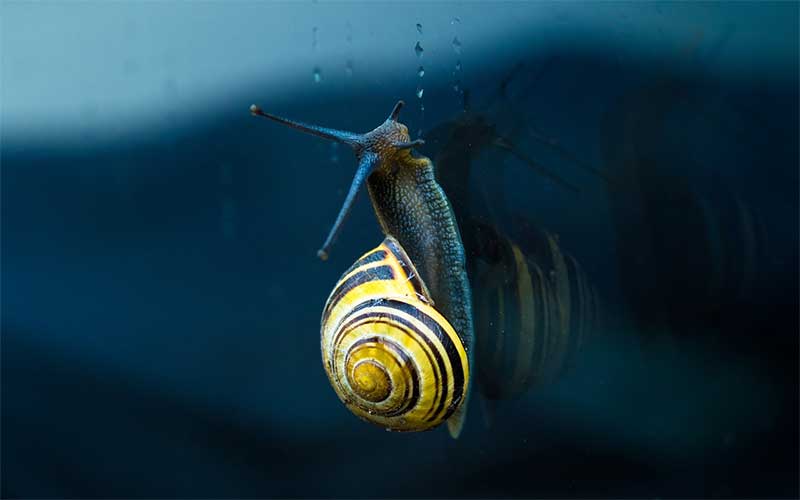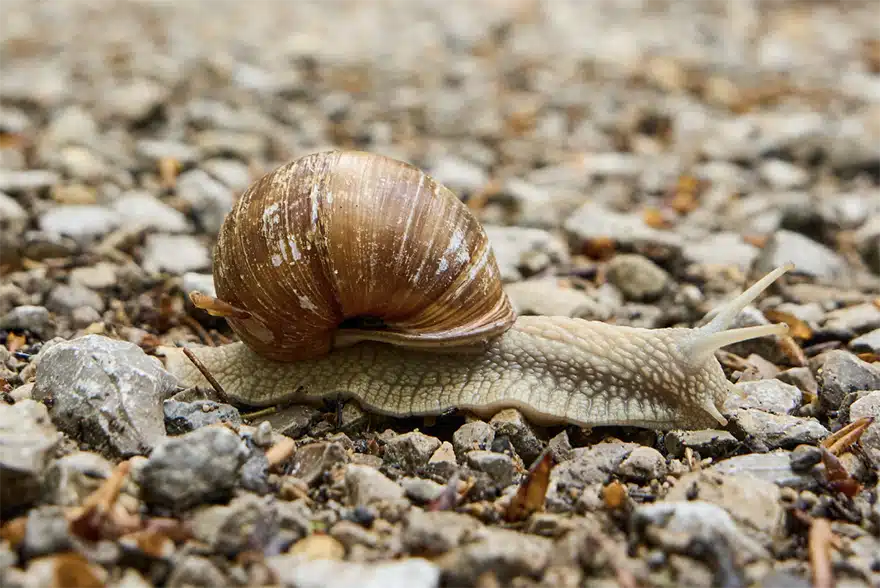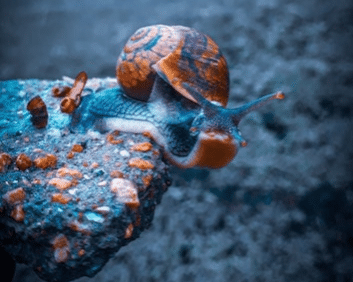How some marine mollusks became land snails?
The evolution of snails is still not clear enough, and their taxonomy or scientific classification keep changing over time. Out of the approximately 5 million species of invertebrate animals (those that do not have an internal skeleton or backbone), about 50,000-85,000 are mollusks that have adapted to both aquatic habitats and terrestrial habitats.
Scientists think that gastropods, bivalves, and cephalopods developed in the Cambrian period about 541-585.4 million years ago. Gastropods, members of the class Gastropoda, are colloquially known as snails and slugs, whether terrestrial, marine or freshwater. According to fossil records, the earliest gastropods lived in the ocean and possibly appeared during the Cambrian period. From this, the mollusks of the genera Strepsodiscus and Chippewaella developed to become the most primitive snails.
About 50,000-85,000 are mollusks that have adapted to both aquatic habitats and terrestrial habitats.
In the Ordovician period, mollusks underwent great diversification and cephalopods, bivalves and gastropods multiplied in number and species in aquatic habitats. They still did not dominate the land, but they were colonizing other places to live.
During the Paleozoic era, gastropods were abundant in the sea. Some groups of them still exist and show characteristics of that period. From the Mesozoic era, marine snails began to evolve and developed the features that are present in current snails. Fossils of Mesozoic species that are in good condition show reasonable resemblances that make them easily identifiable as snails.
The arrival of the snails to the earth
The clade Stylommatophora, which includes land snails and slugs, appeared about 150 million years ago, probably in the Cretaceous period. This group diversified, as result of adaptive radiation, and gave origin to numerous families of snails and slugs, some of which persist in the sites where their fossils arose. By the way, adaptive radiation is a biological process through which living beings rapidly diversify, that is, new forms of a family or group appear that adapt to a particular environment, called a niche.
After Stylommatophora, the groups Basommatophora, Orthurethra, and Sigmurethra were developed. Thus, the number of land snail species grew, and they occupied several habitats or places to live. The oldest registered terrestrial gastropod is Maturipupa, which lived in Europe during the Carboniferous. The species of the genus Helix, from which the garden snail is perhaps the best known, flourished in the Cretaceous period. In the Cenozoic, the gastropods once again had a period of significant diversification.
Land snails are currently abundant animals (with some exceptions that are in danger of extinction) and are present in most of the habitats of the planet.
Sources:
https://en.wikipedia.org/wiki/Mollusca
https://en.wikipedia.org/wiki/Gastropoda
http://www.molluscs.at/gastropoda/terrestrial.html
https://www.ncbi.nlm.nih.gov/pubmed/16217668
http://evolution.berkeley.edu/evolibrary/article/analogy_01
BioExpedition Publishing © 2017.







